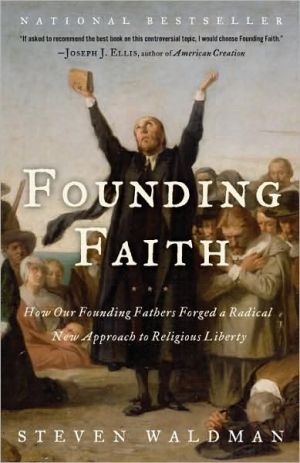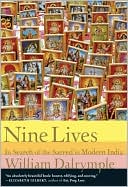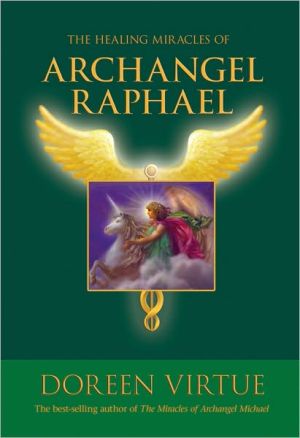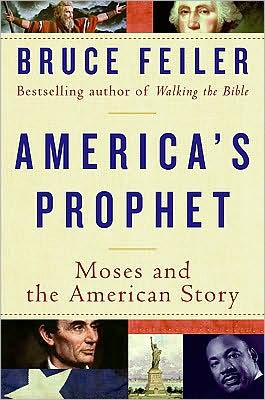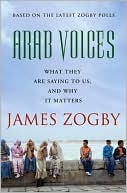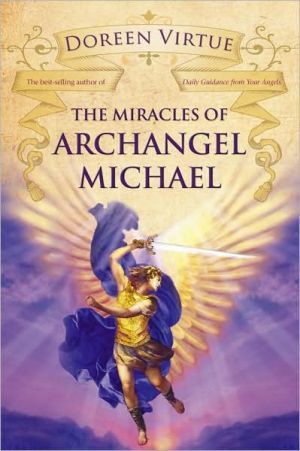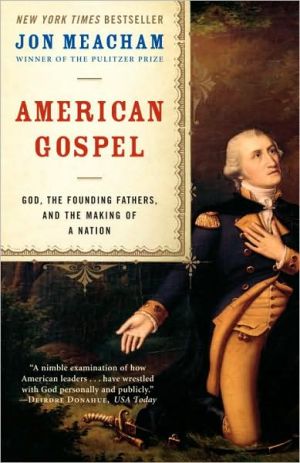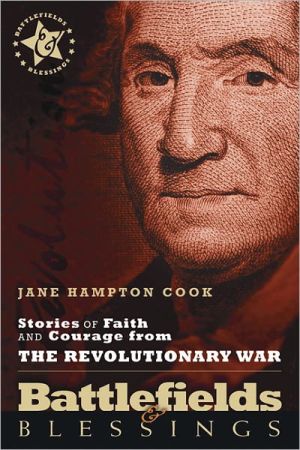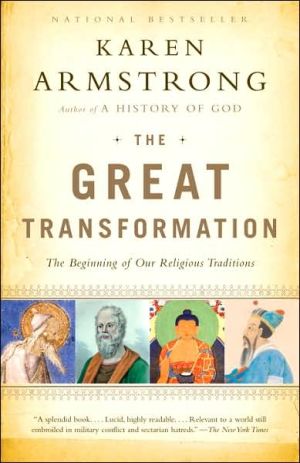Founding Faith: How Our Founding Fathers Forged a Radical New Approach to Religious Liberty
The culture wars have distorted the dramatic story of how Americans came to worship freely. Many activists on the right maintain that the United States was founded as a “Christian nation.” Many on the left contend that the First Amendment was designed to boldly separate church and state. Neither of these claims is true, argues Beliefnet.com editor in chief Steven Waldman. With refreshing objectivity, Waldman narrates the real story of how our nation’s Founders forged a new approach to...
Search in google:
The culture wars have distorted the dramatic story of how Americans came to worship freely. Many activists on the right maintain that the United States was founded as a “Christian nation.” Many on the left contend that the Founders were secular or Deist and that the First Amendment was designed to boldly separate church and state throughout the land. None of these claims are true, argues Beliefnet.com editor in chief Steven Waldman. With refreshing objectivity, Waldman narrates the real story of how our nation’s Founders forged a new approach to religious liberty, a revolutionary formula that promoted faith . . . by leaving it alone.This fast-paced narrative begins with earlier settlers’ stunningly unsuccessful efforts to create a Christian paradise, and concludes with the presidencies of Washington, Adams, Jefferson, and Madison, during which the men who had devised lofty principles regarding the proper relationship between church and state struggled to practice what they’d preached. We see how religion helped cause, and fuel, the Revolutionary War, and how the surprising alliance between Enlightenment philosophers such as Jefferson and Madison and evangelical Christians resulted in separation of church and state.As the drama unfolds, Founding Faith vividly describes the religious development of five Founders. Benjamin Franklin melded the morality-focused Puritan theology of his youth and the reason-based Enlightenment philosophy of his adulthood. John Adams’s pungent views on religion–hatred of the Church of England and Roman Catholics–stoked his revolutionary fervor and shaped his political strategy. GeorgeWashington came to view religious tolerance as a military necessity. Thomas Jefferson pursued a dramatic quest to “rescue” Jesus, in part by editing the Bible. Finally, it was James Madison–the tactical leader of the battle for religious freedom–who crafted an integrated vision of how to prevent tyranny while encouraging religious vibrancy.The spiritual custody battle over the Founding Fathers and the role of religion in America continues today. Waldman provocatively argues that neither side in the culture war has accurately depicted the true origins of the First Amendment. He sets the record straight, revealing the real history of religious freedom to be dramatic, unexpected, paradoxical, and inspiring.An interactive library of the key writings by the Founding Father, on separation of church and state, personal faith, and religious liberty can be found at www.beliefnet.com/foundingfaith.Praise for Founding Faith“Steven Waldman, a veteran journalist and co-founder of Beliefnet.com, a religious web site, surveys the convictions and legacy of the founders clearly and fairly, with a light touch but a careful eye.”—New York Times Book Review“Waldman ends by encouraging us to be like the founders. We should understand their principles, learn from their experience, then have at it ourselves. “We must pick up the argument that they began and do as they instructed – use our reason to determine our views.” A good place to start is this entertaining, provocative book.”—New York Times Book Review"Steven Waldman's enlightening new book, "Founding Faith," is wise and engaging on many levels, but Waldman has done a particular service in detailing Madison's role in creating a culture of religious freedom that has served America so well for so long…."Founding Faith" is an excellent book about an important subject: the inescapable—but manageable—intersection of religious belief and public life. With a grasp of history and an understanding of the exigencies of the moment, Waldman finds a middle ground between those who think of the Founders as apostles in powdered wigs and those who assert, equally inaccurately, that the Founders believed religion had no place in politics."–Newsweek"Well-wrought, well-written and well-reasoned—a welcome infusion of calm good sense into a perennially controversial and relevant subject."–Kirkus"Founding Faith takes up two central questions about religion in early America. First, what did such Founding Fathers as Benjamin Franklin, John Adams, George Washington, Thomas Jefferson and James Madison usually believe? And second, how did it come about that the First Amendment to the Constitution guarantees that "Congress shall make no laws respecting an establishment of religion, or prohibiting the free exercise thereof"? The answers to these questions carry implications for our lives today, since at stake is the flash-point principle of the separation of church and state." –Washington Post“There is a fierce custody battle going on out there for ownership of the Founding Fathers. Founding Faith strikes me as a major contribution to that debate, a sensible and sophisticated argument that the Founders’ religious convictions defy our current categories.”–Joseph Ellis, author of American Creation“Steven Waldman does a great job describing the nuances of the Founders’ beliefs and the balances they struck, thus rescuing them from those on both sides who would oversimplify their ideas.” –Walter Isaacson, president of the Aspen Institute and author of Benjamin Franklin: An American Life.“This is a history every American should know, and Waldman masterfully tells it.”–Jim Wallis, author of The Great Awakening“Steven Waldman recovers the founders’ true beliefs with an insightful and truly original argument. It will change the way you think about the separation of church and state.” –George Stephanopoulos, chief Washington correspondent, ABC News, and anchor of This Week “Steve Waldman makes the strong case that the culture wars have distorted how and why we have religious freedom in America. Americans can be inspired by this story–the extraordinary birth story of freedom of religion.”–William J. Bennett, author of America: The Last Best Hope“An unusually well-balanced book on an unusually controversial subject. Not every reader will agree with Waldman that, of the Founding Fathers, James Madison’s conclusions about religion and society were best. But all should be grateful for the way Waldman replaces myths with facts, clarifies the complexity in making the Founders speak to present-day problems, and allows the Founders who differed with Madison a full and sympathetic hearing. An exceptionally fair, well-researched, and insightful book.”–Mark A. Noll, University of Notre Dame, author of America’s God The New York Times - Richard Brookhiser In Founding Faith, Steven Waldman, a veteran journalist and co-founder of Beliefnet.com, a religious Web site, surveys the convictions and legacy of the founders clearly and fairly, with a light touch but a careful eye…Waldman ends by encouraging us to be like the founders. We should understand their principles, learn from their experience, then have at it ourselves. "We must pick up the argument that they began and do as they instructed—use our reason to determine our views." A good place to start is this entertaining, provocative book.
Founding Faith \ Providence, Politics, and the Birth of Religious Freedom in America\ \ By Steven Waldman Random House \ Copyright © 2008 Steven Waldman\ All right reserved.\ ISBN: 9781400064373\ \ \ 1\ \ Christian America\ \ Settlers try to plant Protestantism as the official faith—and fail\ \ The new world was settled to promote christianity. for more than 150 years, colonial governments actively supported and promoted Christianity. Less acknowledged today is a point well understood by the Founding Fathers: Nearly all of these experiments in state encouragement of religion failed.\ \ \ \ Christopher Columbus believed the world would soon end. In the year 1652, to be exact, Christ would return and usher in a glorious new Kingdom—if certain prophecies were fulfilled before then. Columbus’s arrival in the New World in 1492 was one such event, he wrote later, a clear “fulfillment of what Isaiah had prophesied.” He was quite certain that God had guided him. “With a hand that could be felt, the Lord opened my mind to the fact that it would be possible to sail from here to the Indies.” Another precondition for Jesus’s return was the conquest of Jerusalem, which was held by the Muslims. His voyages to the New World would help with that, too, providing a glorious model to inspire Christian warriors, and the gold to pay their way. Finally, his discovery of the new lands would enable Christians to fulfill anotheressential requirement, the spreading of the Good News to all corners of the world. “The Gospel must now be proclaimed to so many lands in such a short time,” Columbus explained to Queen Isabella and King Ferdinand.1\ \ After encountering hospitable natives in the Caribbean, he had become quite optimistic that he would indeed be able to bring these generous but unsaved souls to God, plus get some cheap labor. “If one asks for anything they have they never say no,” he wrote.2 “They should be good servants . . . and I believe they would easily be made Christians, for they appear to have no religion.”3\ \ Though he declared a desire to convert them “by love and friendship rather than by force,” the Europeans did not have a light touch with the natives. Those in the Caribbean who rejected or destroyed statues of Christian saints were burned at the stake. Slaughter and European-borne disease killed all but a few thousand Indians.4 But the Spaniards persisted and their missions eventually made their way to current-day Florida and Mexico.\ \ While the Spaniards did not ultimately win control of the land that became the thirteen American colonies, fear of Catholic Spain’s expansion helped prompt England to get serious about settling America in the early 1600s.5\ \ Virginia’s Lawes Divine\ \ The twin goals of converting Indians and defeating Catholics provided a strong rallying cry for Virginia’s settlers. Prospective settlers were instructed to bring “no traitors, nor Papists that depend on the Great Whore.”6 An Anglican promotional booklet argued that if the Spanish had so much luck pressing their corrupt religion, imagine how successful the English could be with their noble goals of saving “those wretched people,” drawing them from “darkness to light, from falsehood to truth, from dumb idols to the living God, from the deep pit of hell to the highest heaven.”7 King James’s charter for Virginia in 1606 made it official: The mission was to promote Christianity to those living “in darkness and miserable ignorance of the true knowledge and worship of God.”8\ \ The faiths of the settlers were tested even before they landed in Virginia. One-third of the immigrants on the Godspeed, the Discovery, and the Susan Constant in 1607 died en route. Once in America, their goal of converting Indians soon took a backseat to survival. In 1609 and 1610, the period known as “the starving time,” the colony almost perished. Settlers ate dogs, cats, rats, and one another in order to survive. One man was executed for killing his wife for food.9\ \ To try to salvage the colony, the Virginia Company in May 1611 sent Lord Thomas de la Warr and Thomas Dale, who swiftly issued a new set of laws to bring order, in part through forced religiosity. The law’s preamble declared that the job of the king is “principal care of true Religion and reverence to God”10 and that the settlers themselves were “especial souldiers in this sacred cause.” The new “Lawes Divine, Morall and Martiall” required worship twice each Sunday. Those who failed to do so would lose their daily allowance; a second infraction would draw a whipping, and the third offense would put them in the galleys at sea for six months. Settlers who failed to observe the Sabbath lost provisions for a week (first offense), received a whipping (second offense), or were executed (third offense). Women convicted of sexual misdeeds were required to wear white gowns, hold white wands, and “stand on chairs or stools during public worship.”11 Blasphemy—the use of “unlawful oaths” and “taking the name of God in vain”—was a serious crime, sometimes punishable by having a hot iron plunged through the tongue, and sometimes by execution.12 Eight settlers were put to death in Jamestown for violations of Dale’s laws. Though alien to us, the idea behind forced worship was practical: Pervasive worship would secure God’s favor and give settlers the strength and moral wherewithal to cope with the crushing burdens of disease, Indian attacks, and internal squabbling.\ \ As in England, clergy were to be supported by taxes and public funds, or, to be more precise, ten pounds of tobacco and a bushel of corn per settler. A special patch of farmland, a glebe, was also set aside for the parson.13 Despite these provisions, there was a severe shortage of clergy. By 1662, there were only ten ministers serving forty-five different parishes.14 Since there was no ecclesiastic church structure to monitor religious matters and manage clergy, the state accepted that role, even disciplining clergy who hadn’t preached at least one sermon each Sunday.15\ \ The settlers did survive, in part because of their strong faith. This alone prompted wonder. John Rolfe, an early Jamestown resident credited with the introduction of tobacco, wrote that the settlers were “chosen by the finger of God.”16\ \ In surviving, they prevented encroachment from French and Spanish Catholics who settled west and south of Virginia. At that moment in history, the Catholic Church was viewed in England not as a competing form of Christianity but as a fraudulent faith. It was called “the Whore” because it had prostituted itself by selling indulgences (the promise that for a fee, the church would make sure that the soul of a loved one wouldn’t be stuck in purgatory). Protestants believed Catholics should be called papists, not Christians, because they had substituted worship of the pope for devotion to Christ. And only the Antichrist, it was thought, would use the trappings of faith to so distort the message of Jesus. Not surprisingly, the Virginia government attempted to squelch Catholicism within the colony. In 1640, it prohibited Catholics from holding public office unless they “had taken the oath of allegiance and supremacy” to the Church of England. It decreed that any “popish priests’’ who arrived in Virginia “should be deported forthwith.”17\ \ The settlers’ other religious goal—that of pulling the Indians from the deep pit of hell—proved harder to meet. Pocahontas’s conversion to Christianity was much celebrated and, indeed, is depicted in a painting in the US Capitol to this day. But mostly the settlers just viewed the Indians as untamable savages, and vice versa.18 Moreover, Virginia certainly didn’t limit itself to punishing just Catholics and Indians. In 1660, it forbade ship captains from importing Quakers;19 Puritan clergy were banished; and Jews were kept out entirely for two generations.20\ \ As the economy developed and the population grew, the Church of En- gland became more powerful throughout Virginia. By 1740s, the church had become a place of social and spiritual nourishment for the gentlemen farmers who came to run the colony. Though it became more genteel and less coercive, Anglicanism remained the legally established, official religion of the colony. Taxpayers financed the salaries of the Anglican ministers in their area, as well as the construction of new Anglican churches. During some of this time, other religious bodies were simply not allowed to erect churches at all. Up through the 1740s, it was clear in Virginia that there was one church, one spiritual style, one faith—not just by custom but by law.\ \ The Holy Commonwealth of Massachusetts\ \ While religion was a factor in Jamestown, it was the impetus for Pilgrims who landed in Plymouth and the Puritans who settled in Massachusetts Bay. Again, the motivation was not promotion of Christianity in general but Protestantism specifically. Puritans believed that despite Henry VIII’s split with Rome, the Church of England had retained too many vestiges of the Catholic Church. “Kneeling at the Sacrament, bowing to the Altar and to the name of Jesus, Popish holy days, Holiness of places, Organs and Cathedral Musick, The Books of Common prayer, or church Government by Bishops . . . They are nothing else but reliques of Popery, and remnants of Baal,” sniffed one prominent Puritan.21 They viewed the Anglican ministers as ungodly and incompetent. In a petition to Parliament, one Puritan called the clergy “Dumme Dogs . . . Destroying Drones, or rather Caterpillars of the Word.”22 Worst of all, the Church of England seemed to let in as a congregant any damned sinner who requested entry.\ \ King James found the Puritans annoying. While passing through Lancashire one day in 1618, he noticed that the Puritans had even prohibited sports and recreation. He explicitly prevented them from banning “may-games, Whitsun-ales, Morris-dances, and the setting up of Maypoles”—all activities that Puritans regarded as pagan.23 Though we tend to think of those who settled in New England as fleeing severe religious persecution, it might be more precise to say most were avoiding the harassment of a government that wanted the Puritans to be more liberal. Frustrated by the relentless protests of the Puritans about the church, King James declared, “I shall make them conform themselves, or I will harry them out of the land, or else do worse.”24\ \ The Pilgrims were Puritans who had become “Separatists” because they believed that the Church of England was so corruptly entangled with Catholicism that nothing short of a clean break would suffice. They had left England and sought religious refuge in Holland. Their sense of mission was biblical: William Bradford, in his journal from Plymouth Plantation, compared these settlers to those cast out of Israel. “Our fathers were Englishmen which came over this great ocean, and were ready to perish in this wilderness; but they cried unto the Lord, and he heard their voice, and looked on their adversity.”25 Sailing aboard the Mayflower in 1620, the Pilgrims wrote the Mayflower Compact, committing themselves to “ye glory of God, and advancement of ye Christian faith.”\ \ Though the Pilgrims landed the starring roles in future Thanksgiving celebrations, it was the Puritans who thrived economically, took over Massachusetts, profoundly influenced American religious history. (One historian estimated that in all thirteen colonies, Puritanism “provided the moral and religious background of fully 75% of the people who declared their independence in 1776.”)26 In 1628, the “great migration” of Puritans from England began. They came for “liberty,” said the Massachusetts minister John Cotton—the freedom to practice their religion precisely—“not of some ordinances of God, but of all, and in all purity.”27 It was with tongue not in cheek that Richard Mather explained his motives for immigrating: the opportunity “to censure those who ought to be censured.”28\ \ In spring 1630, John Winthrop, an influential Puritan, boarded the Arbella and headed toward the New Israel. On board, he gave what would become one of the most famous sermons in American history. They were “God’s chosen people,” required by covenant to lead exemplary Christian lives. “We shall be as a City upon a Hill,” he declared. “The eyes of all people are upon us.” This passage has been used by many a politician since, evoking the idea that America would become a model of freedom for the world. But the rest of the sermon bore a darker message. If they didn’t succeed in providing a Christian model, God would show his wrath—“we shall be made a story and a by-word through the world.”29\ \ The Puritans left us many ennobling legacies. They set up Congregational churches that stressed simplicity, local control, and a direct connection to God. Because reading the Bible was so central, they established a remarkable system of schools and pressed for widespread literacy. They outlawed usury and promoted the dignity of work, even to the point of endorsing trade guilds. But this book, by necessity, will focus on how they mixed church and state, and how they used power.\ \ Like the Anglicans who settled in Virginia, the Puritans in Massachusetts viewed church and state as fully entwined—a “Holy Commonwealth.” “Theocracy, or to make the Lord God our governor, is the best form of government in a Christian commonwealth,” wrote John Cotton. If it seems shocking to read one of our forefathers so boldly employ a word today associated with Islamic fundamentalists, we ought to remember that it was a typical approach at the time. Since Constantine made Christianity the official religion of the Roman Empire, Western Christian leaders had believed that, thanks to Adam’s bite of the apple, man was so inherently depraved, a strong one–two punch of church and state working together would be required to tame his evil impulses.\ \ The Puritans believed that civil authorities, bound by the same Bible as they, could be responsible for creating a godly society.30 This wasn’t to be state manipulating church but rather church shaping state. According to Puritan theology, drawn from French theologian John Calvin, they had an obligation to create a kingdom of God on earth—a society and a church of mostly “visible saints” that would make the worldly kingdom resemble heaven as much as possible. This church was to comprise a limited number of Christians selected by God to receive saving grace.31\ \ Figuring out who was favored by God was no easy task. It helped if you were well behaved and prosperous, but that was no guarantee. A candidate for membership in a church would present him- or herself before the elders for examination. He would have to demonstrate facility with scriptures and provide a chronicle of how “God’s saving Grace came to him.” The mission was not to save sinners but to eject them, protecting the saints from corruption. Thomas Shepard, the pastor of the church in Cambridge, Massachusetts, explained that “if we could be so Eagle-eyed, as to discern them now that are hypocrites, we should exclude them now.” Why? Because “one man or woman secretly vile, which the church hath not used all means to discover, may defile a whole church.”32\ \ The church was composed of the saved, and the state would be governed by members of the church. Only full members of the Congregational churches could vote in civil elections. One Puritan named Robert Child suggested that the limitations on the franchise and church membership be abolished. The Massachusetts General Court rejected his request, and had him arrested for good measure.33 Of course, Catholics were not allowed. (Since the Puritans tried to embody the compassion of Jesus, they did allow that any “Jesuits” who had ended up in their midst due to a shipwreck need not be killed.)34 In 1644, the Massachusetts General Court banned Baptists, too.35 Increase Mather, a Boston Puritan leader, later declared that “the Toleration of all Religions and Perswasions, is the way to have no Religion at all.”36 Puritans did not hunt the eastern seaboard for deviants, but tried to keep their own communities spiritually pure. “The government of Massachusetts, and of Connecticut as well, was a dictatorship, and never pretended to be anything else,” wrote Perry Miller, the foremost historian of the Puritans. “It was a dictatorship, not of a single tyrant, or of an economic class, or of a political faction, but of the holy and regenerate.”37 \ \ Continues... \ \ \ \ Excerpted from Founding Faith by Steven Waldman Copyright © 2008 by Steven Waldman. Excerpted by permission.\ All rights reserved. No part of this excerpt may be reproduced or reprinted without permission in writing from the publisher.\ Excerpts are provided by Dial-A-Book Inc. solely for the personal use of visitors to this web site. \ \
Introduction ixChristian America: Settlers try to plant Protestantism as the official faith-and fail 3Benjamin Franklin: The Puritan New Ager 18The Evangelical Revolution: A cross-eyed preacher fuels the drive for independence and religious freedom 27John Adams: The angry Unitarian 33The Godly Roots of Rebellion: Fear of Anglicans and Catholics helps cause the American Revolution 40George Washington: Protected by God 56Holy War: George Washington uses religious tolerance, and appeals to God, to win the War of Independence 64Thomas Jefferson: The pious infidel 72Nature's God Meets the Supreme Judge: The Declaration of Independence and the God compromise 86James Madison: The radical pluralist 94"A Diabolical Persecution": A wave of bigotry in Madison's backyard changes history 100The Mighty Current of Freedom: After independence, the states begin wrenching themselves from the old church-state models 107Forgetting the "Powerful Friend": The Founders reject 150 years of history 127The First Amendment Compromise: Building a wall that looks good from all sides 141Practicing What They Preached: The first presidencies bring inspiring rhetoric, dirty politics, and sharp disagreement among the Founders 159Friends in Heaven: The Founders end their spiritual journeys and prepare to continue the conversation in the next life 182They Were Right 188Acknowledgments 207Bibliography 209Notes 217Index 265
\ Richard BrookhiserIn Founding Faith, Steven Waldman, a veteran journalist and co-founder of Beliefnet.com, a religious Web site, surveys the convictions and legacy of the founders clearly and fairly, with a light touch but a careful eye…Waldman ends by encouraging us to be like the founders. We should understand their principles, learn from their experience, then have at it ourselves. "We must pick up the argument that they began and do as they instructed—use our reason to determine our views." A good place to start is this entertaining, provocative book.\ —The New York Times\ \ \ \ \ Publishers WeeklyVarious American evangelicals have claimed the founding fathers as believing and practicing Protestants who intended America to be a Christian nation. Secularists, on the other hand, see in the same historical record evidence that the founders were often Deists at best. Both views are grossly oversimplified, argues Waldman, cofounder and editor-in-chief of Beliefnet.com. In this engaging, well-researched study, Waldman focuses on the five founding fathers who had the most influence on religion's role in the state-Franklin, Jefferson, Washington, Adams and Madison-and untangles their complex legacy. They were certainly diverse in religiosity, with Jefferson a self-diagnosed heretic, for instance, and Washington a churchgoing Anglican who was silent on points of doctrine and refrained from taking communion. All, however, were committed to the creation of religious freedom in the new nation. Waldman deserves kudos for systematically debunking popular myths: America was not primarily settled by people seeking religious freedom; the separation of church and state did not result from the activism of secularists, but, paradoxically, from the efforts of 18th-century evangelicals; and the American Revolution was as much a reaction against European theocracy as a struggle for economic or political freedom. Waldman produces a thoughtful and remarkably balanced account of religion in early America. (Mar. 18)\ Copyright 2007Reed Business Information\ \ \ School Library JournalBeliefnet.comeditor in chief Waldman describes the dramatic birth of religious freedom in the founding of our nation by letting five Founding Fathers-Benjamin Franklin, John Adams, George Washington, James Madison, and Thomas Jefferson-highlight through original material their efforts in, disagreements and battles over, and approaches to dealing with the place of religion in daily life. Detailed, incisive, and ambitious in scope, this work, more a history of religious freedom than a biography of the founders, enables readers to grasp the beauty and perplexity of the founders' individual journeys and understand how their spiritual states of mind helped to redefine the relationship between religion and government. Waldman concludes that the founding faith was neither Christianity nor secularism but religious liberty. Those familiar with Daniel L. Dreisbach's The Founders on God and Governmentor Jon Meacham's American Gospel: God, the Founding Fathers, and the Making of a Nation will find a similar approach here. What makes this a priority addition to both large and small public and academic libraries is Waldman's moving beyond the often counterproductive thinking on this issue. An eight-page bibliography and the 45 pages of footnotes convey the care with which he makes his comments.—Leroy Hommerding Copyright © Reed Business Information, a division of Reed Elsevier Inc. All rights reserved.\ \ \ \ \ Kirkus ReviewsA sophisticated discussion of the role of religion in the American Republic's early years. Waldman, co-founder and editor-in-chief of the religion website Beliefnet.com, offers a book sure to displease partisans on both sides of an increasingly intense debate that features candidates making obeisance to faith while anti-religious diatribes crowd the bookstore shelves. Rather than taking an "either/or" approach to the historic role of religion in the public sphere, the author argues for "both/and" thinking. Secularists and religionists alike cherry-pick the record in their respective takes on American history, he demonstrates. For example, the former neglect to note that the anti-establishment clause was intended for the federal government only and had no bearing on the states, while the latter fail to understand how deeply skeptical of religion the Founding Fathers were. Waldman traces his story from the days before the Revolution, when many colonies maintained official religions in order to keep Catholics, Baptists and other religious minorities in check. Colonies with more open policies, such as Pennsylvania, benefited economically as well as ecclesiastically by encouraging religious diversity, he argues. One of the book's best sections shows that legislative coalitions and compromises shaped much of what is now considered sacred in the Constitution. Interspersed chapters detailing the spiritual beliefs of Washington, Jefferson, Franklin, Adams and Madison delineate each Founder's thoughts about the role government should play in religious life and that religion should play in civic life. Well-wrought, well-written and well-reasoned-a welcome infusion of calm good sense into aperennially controversial and relevant subject.\ \
